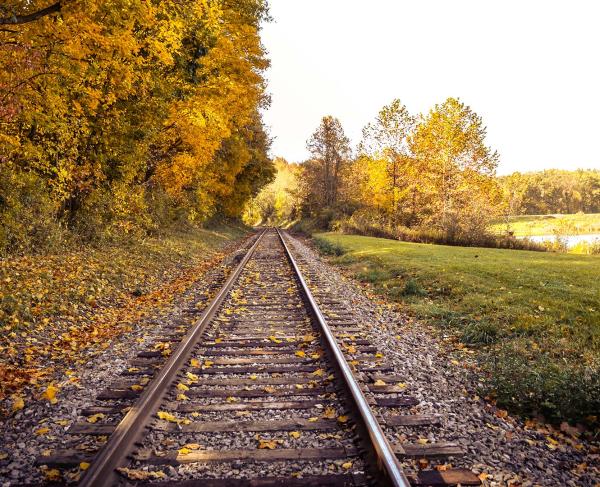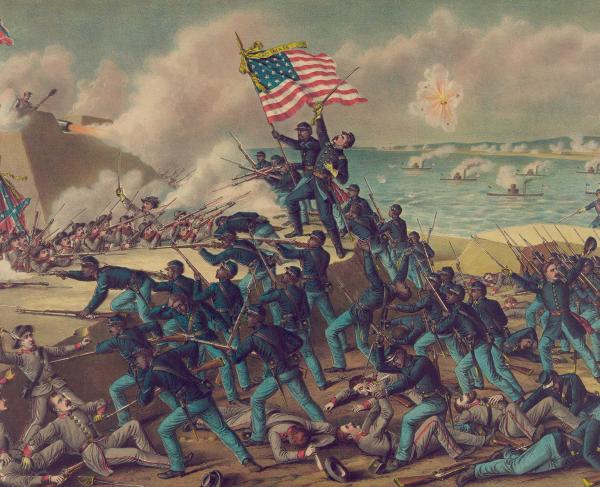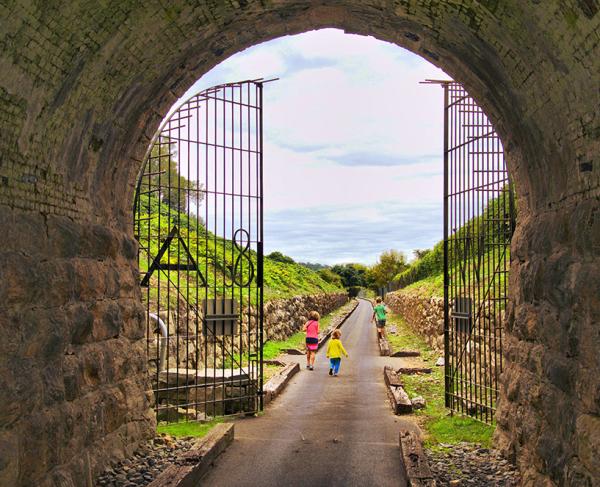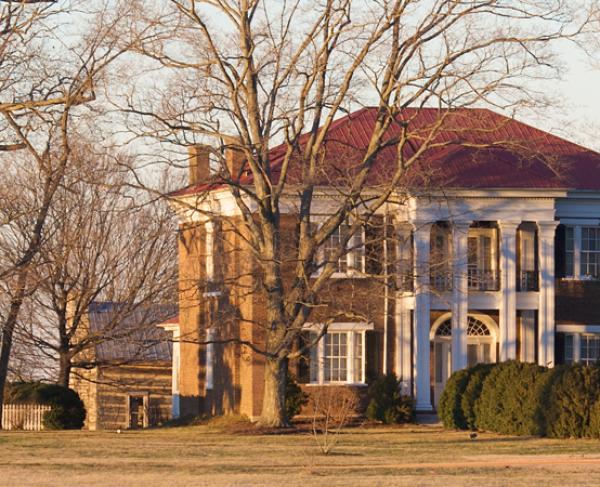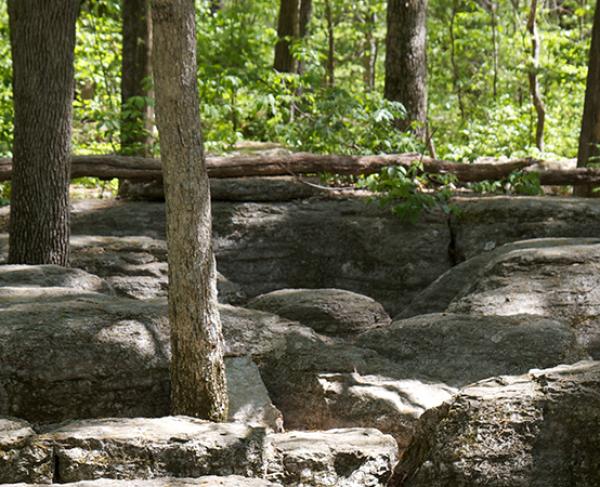Tour Nashville and Vicinity in Two Days
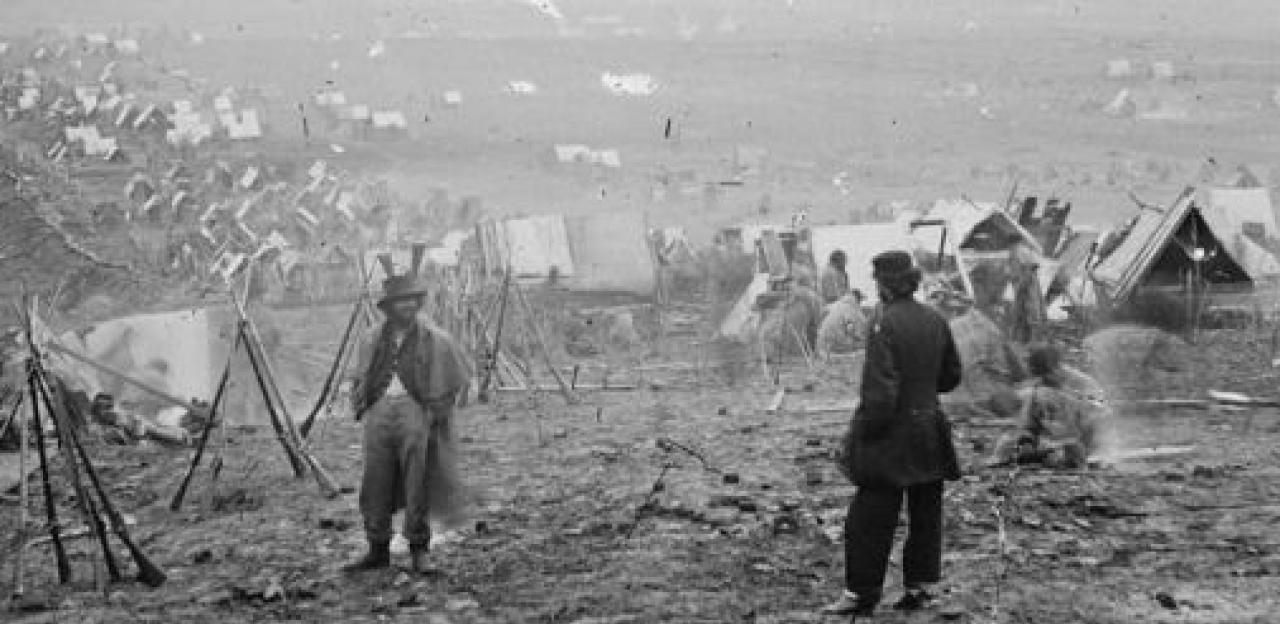
Founded in 1779 and permanently named the state capital of Tennessee in 1843, Nashville was captured by Union forces after the fall of Fort Donelson in February 1862. It soon became one of the most heavily fortified cities in North America. Nashville and the surrounding area witnessed several critical events from the 1862 Battle of Stones River to the Battle of Nashville two years later.
Before you go:
- Bookmark this page and download this Tour Map.
- Learn more about Stones River.
- Learn more about Spring Hill.
- Watch the animated battle map for Franklin.
- Read more about Franklin.
- Explore more about Nashville.
Stop #1: Stones River National Battlefield
Time: 3-4 hours
Details: https://nps.gov/stri/index.htm
Late in 1862, following the failed Confederate effort in the Kentucky Campaign, Union General William Rosecrans faced Confederate General Braxton Bragg southeast of Nashville near Murfreesboro, TN. On New Year’s Eve, Bragg attacked Rosecrans’ right flank. Despite Confederate gains, Rosecrans managed to hold his position for the next two days. Bragg withdrew from the battlefield on January 3. The Union's tactical victory helped give support to the recently authorized Emancipation Proclamation.
What To Do
- Start at the Visitor Center.
- Find out what Ranger Programs are available for that day.
- View the Park Film.
- Tour the museum and browse the bookstore.
- Tour the battlefield. You have several options:
- Take a ranger-led walking tour.
- Hike the nearly seven miles of battlefield trails.
- Take the self-guided 3-mile driving tour (1-2 hours).
Don’t Miss:
- Slaughter Pen - Some of the heaviest fighting of the first day's action took place in this area as Bragg attempted to turn Rosecrans' right flank.
- Cotton Field - At the end of the first day of fighting, Rosecrans' Federals established a new defensive position opposite this location.
- Hazen Monument - Constructed by Union soldiers only six months after the battle, the Hazen Monument is one of the first ever erected on a Civil War battlefield. It commemorates the stand made on the first day of the battle by Col. William Hazen's brigade.
- Round Forest - This part of the Union line did not crack under the pressure of the Confederate assault on December 31.
- McFadden Farm - This area witnessed the final action of the battle on January 2, 1863.
If You Have Time:
- Hike the nearly seven miles of trails located throughout the battlefield.
- Visit Fortress Rosecrans.
- Visit the Stones River National Cemetery.
- Visit Evergreen Cemetery.
Insider’s Tip: For lunch or supper try Slick Pig BBQ or The Alley on Main.
Stop #2: Spring Hill
Time: 2 hours
Details: http://www.springhilltn.org/426/Battle-of-Spring-Hill
On the afternoon of November 29, 1864, following his invasion of Tennessee, a brief fight broke out between elements of John Bell Hood’s Army of Tennessee and David Stanley’s IV Corps south of Spring Hill. That night, Stanley held the town while John Schofield’s Union XXIII Corps joined him via the Franklin-Columbia Pike. Schofield’s men marched silently by the Confederate camp without resistance as Hood missed a prime opportunity to strike a blow at an isolated part of the Union army.
What To Do
- Tour the battlefield.
Don’t Miss:
- Rippa Villa Plantation - An antebellum house, Rippa Villa sits a short distance from the Columbia Pike. Following the Confederates’ inability to attack Schofield late on November 30, John Bell Hood held a heated meeting with his subordinates in Rippa Villa’s parlor.
Stop #3: Franklin Battlefield
Time: 4 hours
Details: https://boft.org
The day after Spring Hill, Hood pursued Schofield north to the town of Franklin. There he encountered a dug-in and determined foe. Hood, however, elected to attack. Late in the afternoon, the Confederates launched several assaults against Schofield’s position. Although initially successful, the attacks were eventually driven back at the cost of the lives of six Confederate general officers, including the famous Patrick Cleburne. Schofield abandoned his position the following morning and withdrew to Nashville.
What To Do
- Start at the Carnton Plantation.
- Find out what tours are available that day at the Carnton Plantation and Carter House.
- Browse the bookstore.
- Walk the Eastern Flank Battlefield Trail.
Don’t Miss:
- McGavock Confederate Cemetery - Many of the dead from the Army of Tennessee are interred in the McGavock Family Cemetery.
- Winstead Hill - Hood observed the attacks from this elevation south of Franklin.
- Carter House & Cotton Gin - Built by Fountain Carter in 1830, the Carter House was used by Union General Jacob Cox as his headquarters. Federal counterattacks met and drove back Confederate infantry in the area where the house stands. One of the Carter sons, Tod, an aide to General Thomas B. Smith, was killed near his home. Elements of Hood's assault broke through the Union line in the area where the family's cotton gin stood. One of the six Confederate generals to fall at Franklin, Patrick Cleburne was shot down nearby.
If You Have Time
- Visit Fort Granger
Insider’s Tip: For lunch or supper try Mellow Mushroom or Five Daughters Bakery.
Stop #4: Nashville Battlefield
Time: 3-4 hours
Details: https://bonps.org
Hood pursued Schofield and reached the outskirts of Nashville only to face General George H. Thomas and his army. Delayed by the weather, it was not until some two weeks later that Thomas could launch an assault. The two-day battle that resulted smashed Hood’s army and ended the Confederate threat to Tennessee.
Don’t Miss
- Fort Negley - Designed by Union engineer James St. Clair Morton, Fort Negley stood on St. Cloud Hill. The fortification was one of several that formed the main defenses of Nashville and was built by slaves impressed by the Union army. It was named for the one-time commander of the Nashville garrison, Gen. James Negley.
- Granbury’s Lunette - Named for Gen. Hiram Granbury who had been killed at Franklin, this fortification stood on the far right of the Confederate position. General James Steedman’s Union division attacked this fortification on December 15. Several regiments under Steedman were United States Colored Troops (USCTs).
- Redoubt #1 - After their arrival on the outskirts of Nashville, the Confederates constructed redoubts opposite the city’s fortifications. Union troops from General Thomas Wood’s IV Corps captured this position on the first day of the battle.
- Shy’s Hill - As Hood regrouped his army after the first day’s battle, the high ground known as Shy’s Hill formed his left flank. Late in the afternoon of December 16, General John McArthur’s division stormed and captured the hill. McArthur’s assault broke the Confederate line and forced Hood to retreat.
- Kelley’s Point Battlefield - From this position, Confederate artillery blockaded the nearby Cumberland River and engaged several Union ironclads. Currently closed to the public.
If You Have Time:
- Visit Traveler’s Rest.
- Visit the Battle of Nashville Monument.
- Tennessee State Capital and Military Museum.
Insider’s Tip: For lunch or supper try Martin’s Bar-B-Que Joint or Hattie B’s Hot Chicken
Help the Trust save 161 acres across consequential Western Theater battles — Fort Heiman and Fort Henry, Brown’s Ferry/Chattanooga, Spring Hill, and...
Related Battles
350
500
2,326
6,252
3,061
6,000
